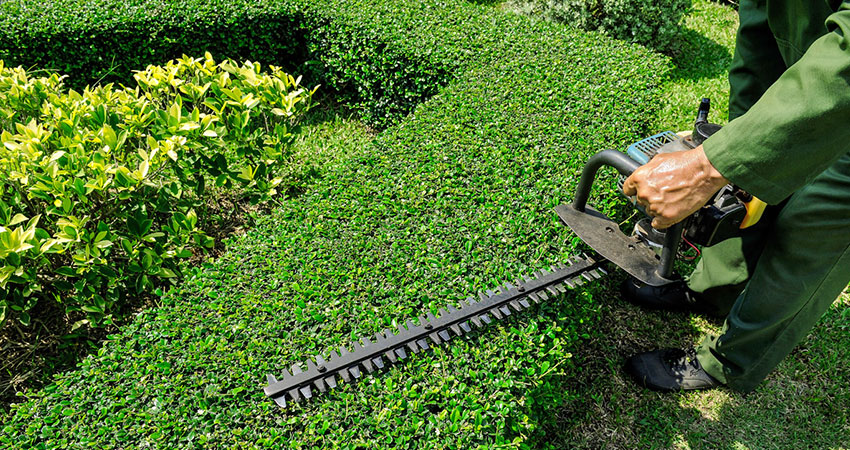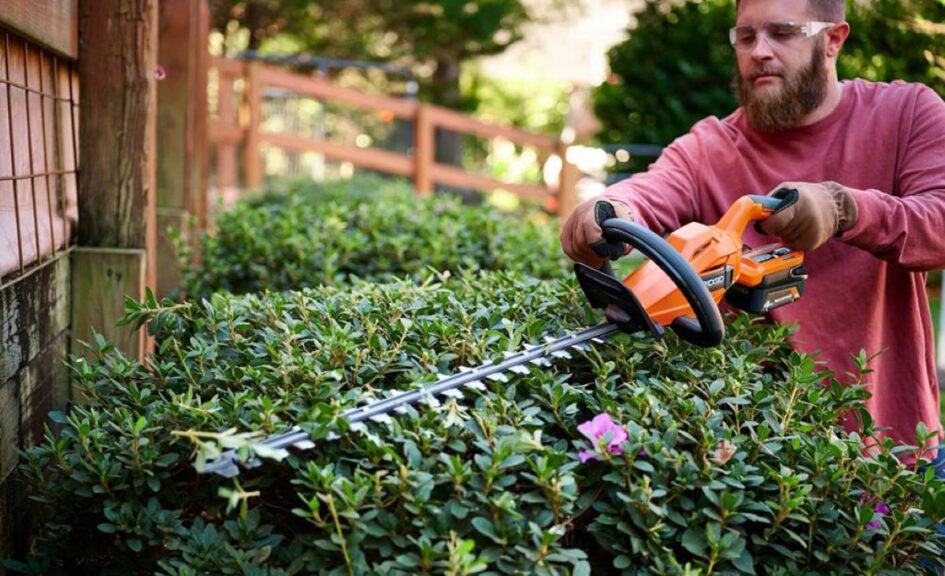Mastering the art of hedge trimming requires understanding the critical role timing plays in maintaining healthy, attractive hedges. A well-executed seasonal trimming schedule transforms ordinary hedges into stunning landscape features while promoting robust growth and longevity.
Strategic hedge trimming delivers multiple benefits:
- Enhanced Visual Appeal: Precise cuts create clean lines and balanced shapes
- Improved Plant Health: Regular trimming stimulates new growth and air circulation
- Disease Prevention: Proper timing reduces the risk of fungal infections and pest infestations
- Structural Strength: Seasonal maintenance develops strong branch networks
- Property Value: Well-maintained hedges boost kerb appeal
The success of hedge trimming lies in aligning maintenance with natural growth cycles. Each season presents unique opportunities and challenges for hedge care:
- Late Spring: Light pruning to encourage new growth
- Early Summer: Main pruning for shape control
- Late Summer: Touch-up trimming
- Fall: Preparation for winter
- Winter: Major structural pruning
This seasonal guide provides detailed insights into best time to trim hedges, specific techniques, and essential maintenance practices. By following these time-tested guidelines, gardeners can achieve professional results while protecting their hedges’ long-term health and vitality.
Importance of Trimming Hedges
Regular hedge trimming is essential for keeping garden boundaries strong and looking good. When done correctly, trimming encourages new shoots and leaves to grow, making the foliage denser and the hedge appear fuller.
Key Benefits of Regular Hedge Trimming:
- Creates a strong branch structure that supports healthy growth
- Prevents bare patches by encouraging uniform leaf distribution
- Maintains an ideal height and width for property boundaries
- Reduces disease risks through improved air circulation
- Controls invasive growth patterns that can affect nearby plants
A well-maintained hedge needs regular trimming to achieve a balanced appearance. Removing dead, diseased, or crossing branches allows sunlight to reach the inside of the hedge, promoting even growth from top to bottom.
Having a consistent trimming schedule helps hedges develop strong roots, making them more resilient to environmental stresses and better able to hold their shape. Regular maintenance also stops hedges from becoming overgrown, which can lead to weak growth and potential safety issues.
Seasonal Guide for Trimming Hedges
The timing of hedge trimming plays a vital role in maintaining healthy, vibrant hedges throughout the year. Each season presents unique opportunities and challenges for hedge maintenance, requiring specific approaches to achieve optimal results.
Late Spring: Light Pruning and Shaping for New Growth
Late spring marks the beginning of the active growing season, making it an ideal time for light pruning and initial shaping. As temperatures warm and days lengthen, hedges emerge from winter dormancy with renewed vigour.
Optimal Timing
- Mid to late May
- After the last frost has passed
- When new growth reaches 6-8 inches in length
Pruning Guidelines
- Remove dead or damaged branches
- Trim back new shoots by 2-3 inches
- Shape the hedge to maintain desired form
- Cut at a slight angle to promote water runoff
Benefits of Late Spring Trimming
- Stimulates robust new growth
- Encourages dense foliage development
- Prevents leggy, sparse growth patterns
- Establishes strong structural framework
Key Considerations
- Check for nesting birds before trimming
- Avoid cutting into old wood
- Maintain wider base than top for sunlight exposure
- Remove no more than one-third of new growth
Late spring pruning sets the foundation for healthy hedge development throughout the growing season. This initial trim establishes the desired shape while promoting balanced growth patterns. The careful removal of winter-damaged sections allows the hedge to direct energy towards fresh growth, resulting in fuller, more vigorous plants.
For flowering hedges, timing becomes particularly crucial. Spring-flowering varieties should be pruned immediately after blooming to avoid removing next year’s flower buds. Summer-flowering hedges benefit from early spring pruning to encourage strong flower development.
Professional arborists recommend using clean, sharp tools during late spring trimming to ensure precise cuts that heal quickly. This practice minimises stress on the plants and reduces the risk of disease transmission through pruning wounds.
Early Summer: Main Pruning for Size Control and Shape Maintenance
Early summer is the best time for significant hedge pruning. The plants have established strong growth patterns and developed robust energy reserves, making them resilient to more intensive trimming.
Optimal Timing for Size Control:
- Mid-June through early July
- After spring growth surge
- Before intense summer heat
- During morning hours when plants are hydrated
The main pruning session demands careful attention to maintaining proper hedge proportions. A well-shaped hedge should be wider at the base than the top, creating a slight taper. This shape allows sunlight to reach all parts of the hedge, preventing bare patches and promoting uniform growth.
Key Size Control Techniques:
- Remove up to one-third of the current season’s growth
- Cut back wayward branches to maintain clean lines
- Address thickness issues by selective interior pruning
- Maintain consistent height across the hedge span
Shape maintenance during early summer pruning requires precise cuts and careful planning. Professional arborists recommend:
- Using sharp, clean tools for precise cuts
- Establishing guide strings for straight lines
- Checking proportions from multiple angles
- Making graduated cuts rather than severe removals
The early summer pruning session sets the foundation for the hedge’s appearance throughout the growing season. A thorough trim during this period reduces the need for frequent maintenance cuts later in the season and helps establish strong structural growth patterns.
Late Summer: Touch-Up Trimming for Pre-Fall Maintenance
Late summer touch-up trimming is an important maintenance step to get hedges ready for the tough conditions of autumn. This strategic trim helps hedges look good while also making them stronger for the upcoming seasonal changes.
Key Benefits of Late Summer Trimming:
- Removes dead or damaged growth from summer stress
- Prevents fungal diseases that thrive in autumn conditions
- Maintains neat appearance through autumn and winter
- Reduces the risk of snow damage in winter months
- Allows time for mild regrowth before dormancy
The best time for late summer maintenance is between mid-August and early September. This period gives plants enough time to recover before the first frost arrives.

Recommended Trimming Practices:
- Remove no more than 1/3 of the current season’s growth
- Focus on maintaining the established shape
- Clear away dead or crossing branches
- Ensure clean cuts to prevent disease entry points
- Pay special attention to the hedge top to prevent water pooling
Late summer trimming requires a gentler approach compared to early summer maintenance. Light shaping helps hedges maintain their form without triggering extensive new growth that might not harden off before winter.
Special Considerations:
- Avoid heavy pruning that might stimulate tender growth
- Check weather forecasts to trim during dry periods
- Remove all trimmed material from the base of hedges
- Inspect for signs of pest infestation or disease
- Water thoroughly after trimming to reduce stress
This maintenance phase gets hedges ready for the difficult transition between growing seasons, preparing them for a successful winter dormancy.
Fall: Light Pruning for Winter Preparation and Disease Prevention
Fall pruning requires a delicate balance to prepare hedges for winter dormancy. Light pruning during this season helps maintain hedge health while avoiding potential damage from harsh winter conditions.
Essential Fall Pruning Guidelines:
- Remove dead, diseased, or crossing branches
- Trim back any late-season growth spurts
- Cut back branches that could snap under snow weight
- Clear away any trapped leaves or debris within the hedge
Recommended Pruning Depth:
- Limit cuts to no more than 1/4 of the branch thickness
- Maintain at least 2/3 of the hedge’s foliage
- Focus on thinning rather than heavy reshaping
The timing of fall pruning plays a crucial role in hedge health. Pruning should occur before the first frost to allow healing time for any cuts. This practice reduces the risk of frost damage and winter burn.
Disease Prevention Measures:
- Clean tools between cuts with a 10% bleach solution
- Make clean, angled cuts to prevent water pooling
- Remove all pruned material from the base of hedges
- Inspect for signs of disease or pest infestation
A light trim in fall helps hedges maintain their shape through winter while reducing the risk of snow damage. The goal is to create a strong structure that can withstand winter conditions without compromising the plant’s health.
Height Considerations:
- Maintain a wider base than top
- Keep the height proportional to the base width
- Avoid trimming more than 15cm off the height
- Ensure even distribution of sunlight throughout the hedge
Winter (Dormant Period): Major Pruning for Stress Reduction and Deciduous Hedges
Winter dormancy is the perfect time to do some serious pruning on your hedges, especially if they are deciduous (meaning they lose their leaves in winter). During this time, plants naturally go into a resting state, which makes them less likely to be stressed by heavy cutting.
Benefits of Winter Pruning:
- Reduced sap flow minimises bleeding
- Enhanced visibility of branch structure
- Lower risk of disease transmission
- Decreased shock to the plant system
The dormant season allows for aggressive pruning techniques that might be too harsh during active growth periods. Deciduous hedges can be cut back by up to one-third of their total size without causing lasting damage. This substantial reduction helps maintain the desired hedge dimensions whilst promoting robust spring growth.
Optimal Pruning Practices:
- Remove dead or crossing branches
- Cut back overgrown sections to maintain shape
- Thin out dense areas to improve air circulation
- Create a slight taper from base to top
For detailed guidance, you may refer to this comprehensive resource on pruning trees and shrubs.
Winter pruning also serves as a preventive measure against potential snow damage. By reducing the hedge’s mass, heavy snowfall is less likely to cause branch breakage or structural failure.
Professional Tip: Schedule major pruning for mild winter days when temperatures hover above freezing. This timing reduces the risk of frost damage to freshly cut stems.
For formal hedges, maintaining straight lines and crisp edges during winter pruning establishes a strong framework for the coming growing season. This structural groundwork ensures the hedge develops uniformly when growth resumes in spring.
Pruning Techniques and Tips for Different Types of Hedges
Different hedge varieties require specific pruning approaches to maintain their health and beauty. Understanding these distinct requirements helps achieve optimal results for each hedge type.
Spring-Flowering Hedges
- Prune immediately after blooming ends
- Remove spent flowers and dead wood
- Shape while preserving next year’s buds
- Examples: Lilac, Forsythia, Mock Orange
These pruning techniques are essential for spring-flowering hedges to ensure they bloom beautifully year after year.
Summer-Flowering Hedges
- Cut back in early spring before new growth
- Remove previous year’s flowering stems
- Maintain a rounded crown for even light distribution
- Examples: Butterfly Bush, Rose of Sharon
The timing of the pruning is crucial for summer-flowering hedges, as it directly impacts their growth and flowering.
Evergreen Hedges
- Light trimming throughout growing season
- Maintain wider base than top for sunlight access
- Cut back to green growth zones
- Examples: Boxwood, Yew, Holly
For evergreen hedges, regular pruning is necessary to keep them healthy and vibrant.
Fast-Growing Hedges
- Regular trimming every 6-8 weeks during growth
- Remove up to one-third of new growth
- Shape gradually to prevent stress
- Examples: Privet, Laurel, Leyland Cypress
Fast-growing hedges require frequent trimming to manage their rapid growth effectively.
Formal Hedges
- Create crisp edges with string lines
- Use sharp, clean tools for precise cuts
- Maintain geometric shapes through frequent trimming
- Examples: Box, Hornbeam, Beech
These pruning techniques protect hedge health while maintaining aesthetic appeal. Each method considers the plant’s natural growth pattern and flowering cycle to maximise visual impact and longevity.

Hedge Maintenance Tips for Better Health and Growth
Regular maintenance practices create the foundation for robust, healthy hedges that enhance any landscape. Proper care extends beyond seasonal trimming to include essential nurturing techniques.
Essential Maintenance Practices:
- Shape Management:
- Maintain a wider base than top
- Create a slight taper upwards
- Ensures sunlight reaches all parts of the hedge
- Proper Watering:
- Deep watering at root zone
- Morning irrigation to prevent fungal growth
- Mulch application to retain moisture
- Health Monitoring:
- Regular inspection for pest infestations
- Disease identification
- Prompt treatment of affected areas
Growth-Promoting Techniques:
- Strategic Pruning:
- Remove dead or crossing branches
- Cut back to healthy growth points
- Maintain desired height and width
- Soil Care:
- Annual fertilisation in spring
- pH testing and adjustment
- Regular mulch replacement
- Air Circulation:
- Thin dense areas
- Remove interior dead growth
- Create spaces for air movement
Professional arborist services can provide specialised care plans tailored to specific hedge varieties and local conditions. These maintenance practices, combined with proper seasonal trimming, create optimal conditions for hedge health and sustained growth.
More to Read : Stump Grinding Near Me: Fast and Affordable Solutions

Leave a Reply